21+ Employer Branding Samples
-
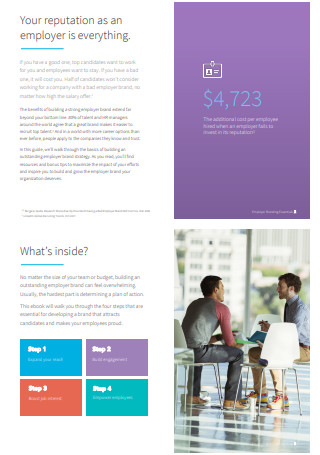
Employer Branding Essentials
download now -
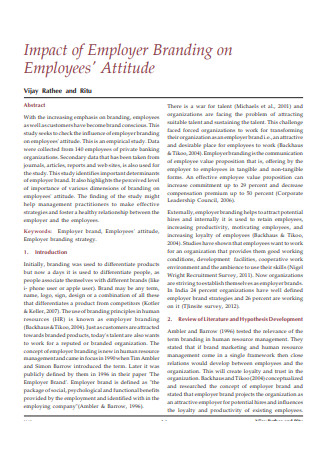
Impact of Employer Branding
download now -
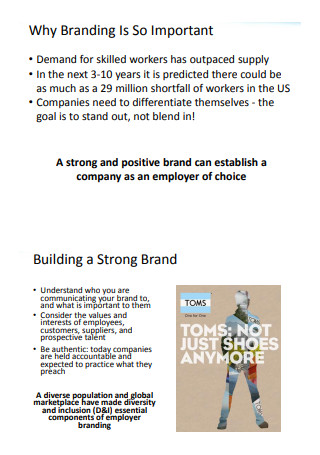
Employer Branding
download now -
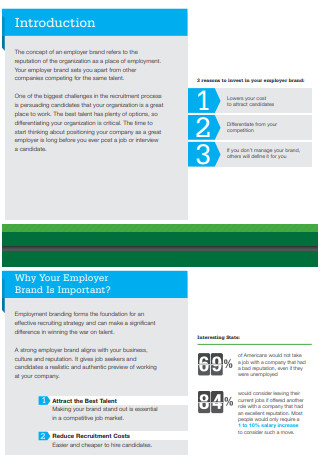
Employer Brand eBook
download now -
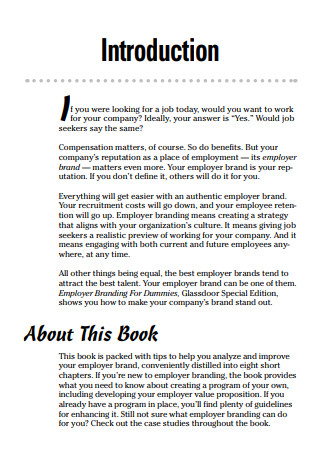
Employer Branding For Dummies
download now -
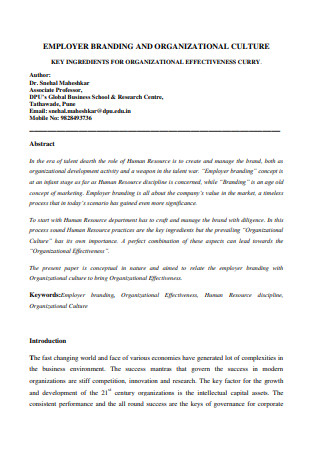
Employer Branding and Organizational Culture
download now -
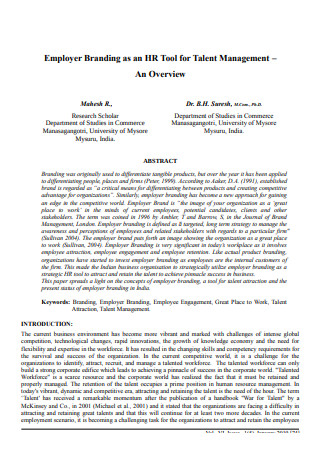
Employer Branding as HR Tool
download now -
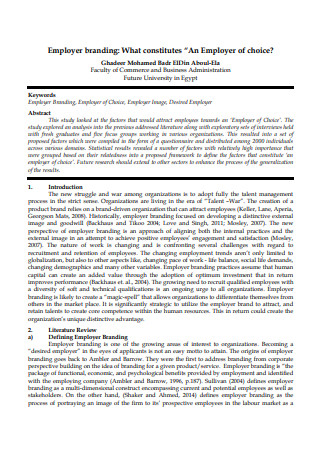
Employer Branding Template
download now -
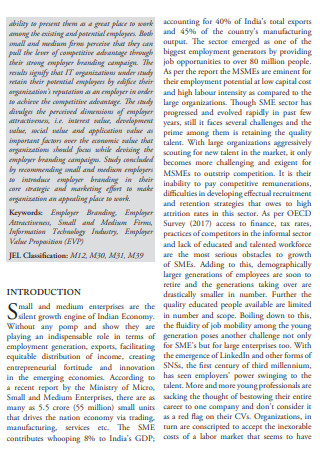
Sample Employer Branding
download now -
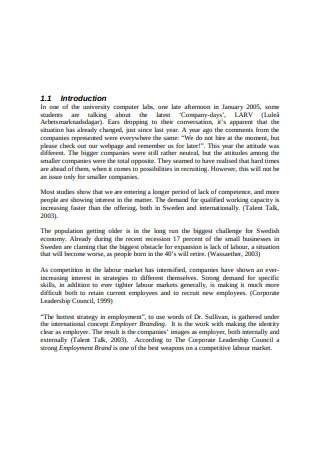
Employer Branding Example
download now -
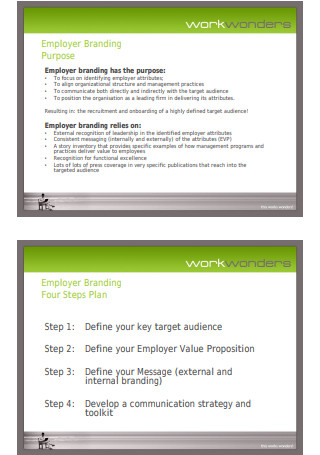
Employer Branding PPT
download now -
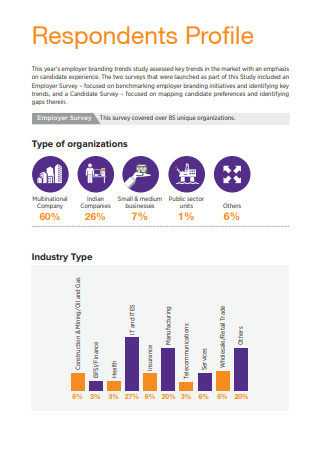
Employer Branding Report
download now -
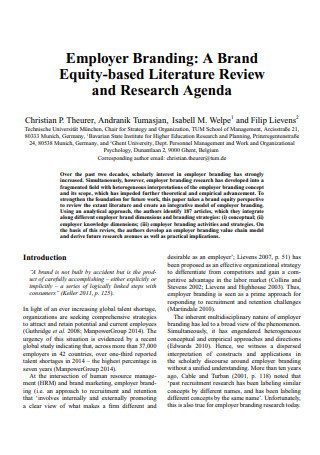
Employer Branding Review and Research Agenda
download now -
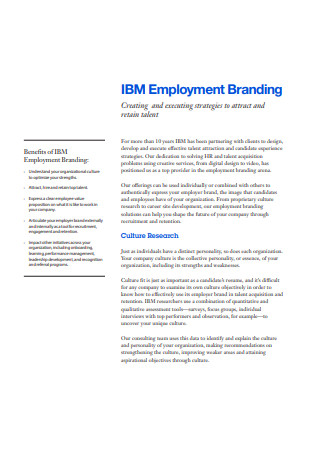
Benefits of Employment Branding
download now -
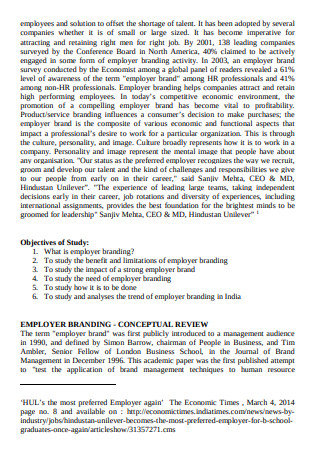
Employer Branding Descriptive Study
download now -
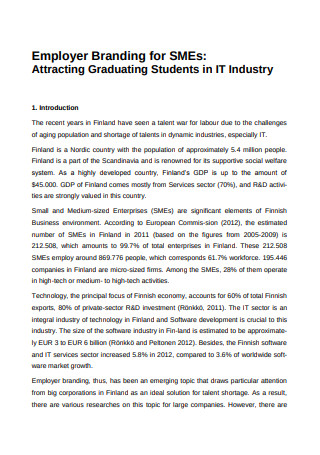
Employer Branding for SMEs
download now -
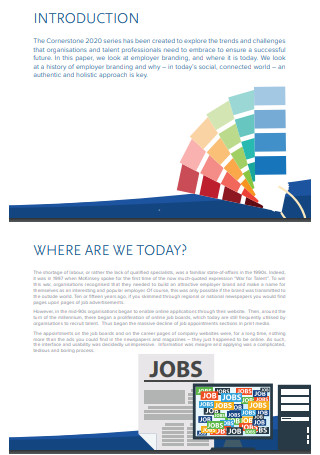
Employer Branding in PPT
download now -
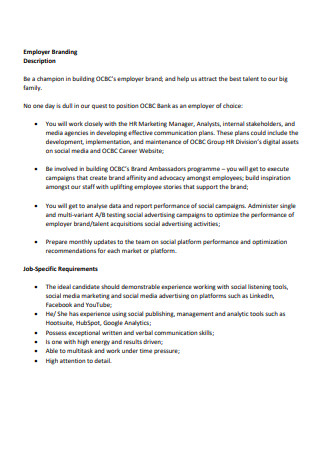
Employer Branding Description
download now -
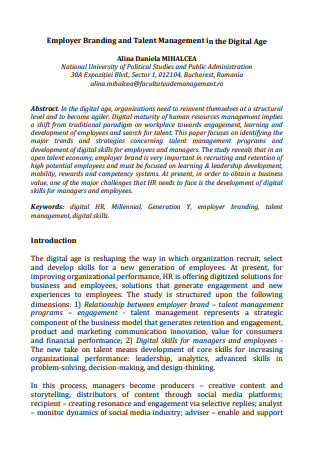
Employer Branding and Talent Management
download now -
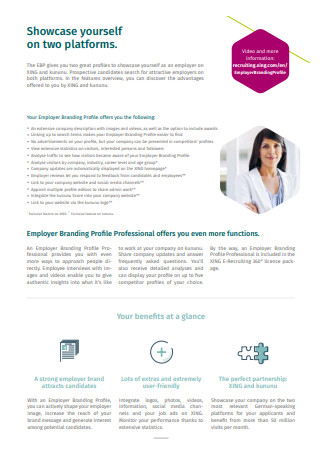
Employer Branding Profile
download now -
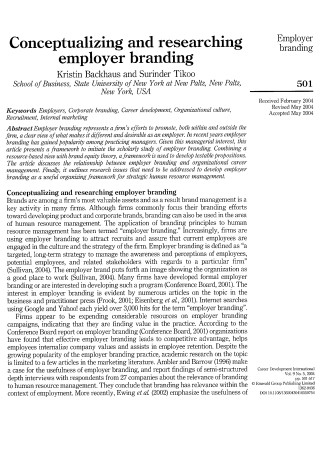
Conceptualizing and Researching Employer Branding
download now -
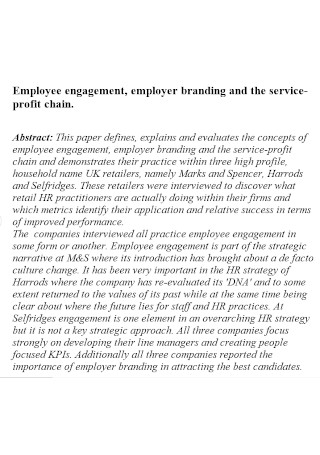
Employer Engagement Branding Template
download now
FREE Employer Branding s to Download
21+ Employer Branding Samples
What Is Employer Branding?
Factors to Consider for Proper Employer Branding
Platforms and Activities Used for Efficient Employer Branding
7 Steps for Developing an Effective Employer Branding
Benefits of Having a Thorough Employer Branding
Dos and Don’ts for Making an Impressive Employer Branding
What Is Employer Branding?
During recruitment, 78% of applicants believe that what they experience as job candidates indicate or reflects the way an employer values its workforce (source: talentadore). This is the main reason why employer branding is very important. Employer branding is a method or a concept that deals with the identification of variables, elements, and factors that can contribute to the development of an organization’s impressive and effective employer brand. Employer branding takes care of the ways in which a business presents itself as a corporate entity to its target employees. Hence, employer branding is all about ensuring that a business retains an ideal brand which professionals can appreciate and would like to be associated with.
Factors to Consider for Proper Employer Branding
Do you want to be an organization where high-performing experts and professionals would like to work at? Your employer branding can just help you with that. There are certain things that you have to prioritize if you want to get involved in employer branding. A few of the factors that you have to consider as you try to conceptualize your employer brand are as follows:
1. Specification of Appropriate Employer Branding Strategies
How will you develop your employer brand? You need to have a list of employer branding strategies that you think are suitable for your needs and the way you would like to be perceived by your target audience. You have to specify and define these employer branding strategies clearly so that your stakeholders can understand the things that you would like them to do and prioritize.
2. Participation of Employees in All the Stages of Employer Branding
The things that your current and previous employees will share to other people about your business can shape the image of your organization. Even if you do not have any control on what they have to say, allowing your employees to feel their involvement in every part of the employer branding process can serve as an internal activation and a communication channel that can let them share positive things about you as an employer.
3. Involvement of Leaders When It Comes to Championing the Employer Brand
Leadership is essential if you want to carry your employer branding initiatives all throughout the organization. Your department heads, managers, and supervisors should make sure that the employer brand of the company is known by its workforce. Allowing this to happen can let your employees be proud of a work culture that can also be appreciated by job seekers.
4. Development of Healthy and Collaborative Relationships Between the Human Resource Department and Involved Entities
The human resource department is responsible for the processes of recruitment. Marketing the business to potential employees is a part of this process. As an example of corporate communications, employer branding should also be shared by the human resource department to other stakeholders. Ensuring the healthy relationship of the hr and the business to suppliers, employees, applicants, and other entities are very vital for an employer brand to be strengthened and further be improved.
Platforms and Activities Used for Efficient Employer Branding
If you want to create a sample plan for businesses, it will be best if you can include a discussion about employer branding. Ensure that you will utilize the strength and power of your employer brand. Here are some of the platforms and activities that are utilized by organizations to present their employer brand:
7 Steps for Developing an Effective Employer Branding
As a business, it is essential for you to know what employer branding is all about and how it can help you in a number of ways. In addition to this, it is important for you to have an idea on how you can create an employer branding from scratch. Here is a simple process that you can follow if you already want to begin the creation of an effective employer branding:
Step 1: Use an Employer Branding Template and Other Kinds of Relevant References
Find the best template that you can optimize for the creation of your employer branding document. To improve your knowledge about employer branding; you can also review a number of branding proposals, branding quotations, and other documents which can provide you with an idea of how you can make, better, and/or maintain your employer brand.
Step 2: Create an Introduction Which Can Directly Identify the Needs and Vision of the Business
It is essential for you to focus on your employer brand if you want to showcase a strong and impressive company culture that can surely get the attention and approval of talented and skilled work candidates. Your employer branding should have an introduction that can present the purpose of the activity and the reasons why it is essential for the organization to focus on its employer brand.
Step 3: Discuss Your Employer Value Proposition, Key Performance Indicators, Goals, and Objectives
After a brief introduction, you can already present the ways on how you would like your target audience to see you. Give an idea about your employer value proposition and key performance indicators. Aside from these, you also have to describe your employer branding’s goals so you can set time frames and deadlines for your strategies’ implementation.
Step 4: Describe and Understand the Target Audience of the Organization
When developing the brand of your business as an employer, you have to consider the people that you would like to tap. Know the kind of employees that you would like to reach. Having an idea about the specific skill set, abilities, characteristics, and behavior that your desired employees should have can make it easier for you to know how you can develop an employer brand that can be interesting to the type of professionals that you plan to hire.
Step 5: Select Communication Channels to Optimize Available Business Resources
You have to really develop communication ideas. Know the mediums, channels, touchpoints, and platforms that you can use to share your employer brand. Look at the resources of your organization so you can maximize their usages whenever you plan to establish an effective employer branding.
Step 6: Come Up With an Annual Employer Branding Plan Filled With Strategic Actions
Aside from your operational, marketing and sales strategies; you also have to look into the employee engagement strategy and employer branding strategies of your business. Use an annual plan that can organize the schedule of your employer branding processes. You have to know when to implement specific strategies and activities so you can get the benefits that you expect to have out of your employer branding efforts.
Step 7: Polish the Employer Branding to Have an Outstanding Output
Finalize the content and format of your employer branding. Ensure that you have a refined document that can help you execute your plans of action accordingly. Once you have already implemented your employer branding, we recommend you to do some evaluations and assessments so you can identify the things that you must change and improve.
Benefits of Having a Thorough Employer Branding
Employer branding is the process of identifying your employer brand. It also involves dealing with the expectations of your candidates and employees so you can allow them to be your ambassadors. With the help of an employer branding strategy, you can explain what professionals can gain from the business. There are many advantages that your business and its stakeholders can experience if you can have an employer branding that works effectively. Below are some of the benefits of having a thorough employer branding.
Dos and Don’ts for Making an Impressive Employer Branding
Employer branding can help you to potentially increase the number of quality candidates who are willing to be a part of your organization. With this, you have to prioritize the development of your employer brand. Here are some tips, guidelines, and reminders that can help you make an impressive employer branding in a timely manner:
Do’s
1. Do Identify The Best Employer Branding Strategy to Use
Understand the needs, desires, and wants of your stakeholders. How you are perceived by entities involved in your business operations play an important role when it comes to building your employer brand. Make sure that your approach is objective and fully-driven so you can eliminate the variables that hinder you from achieving your desired employer brand. Investing on the right strategies for employer branding can help you optimize your time, resources, and efforts.
2. Do clarify Your Employer Offerings
Be specific with your employer value proposition. What are the things that you can offer to the professionals who have the potential to be your employees? What can these professionals expect once they are already a part of your business? Clarify your strengths and make sure that these are known by your target audience. In this manner, you can attract people who can add value to your organization.
3. Do Know That An Employer Brand Is Not Always Pursued Actively
Even if you already have a clear employer value proposition and a list of employer branding strategies, there are still variables that are out of your control. Aside from the continuous maintenance of your employer branding and the improvement of your recruitment processes as a business, the experiences of your employees and the initial impression of applicants towards your business can also contribute to your employer brand. Hence, your approach to employer branding should be multi-dimensional so you can make the most out of what you can do for the organization.
Don’ts
1. Don’t Use Poorly-Made Employer Branding Strategies
It is imperative for you to have an idea about the fundamentals of employer branding. In this manner, you can create a strong foundation for the creation of an employer brand that you can be proud of. Poorly-made strategies can only weaken your intentions. With this, it is important for you to veer away from using strategies that are not of quality whenever you are in the midst of planning your employer branding activities.
2. Don’t Make a Generic Employer Branding
It is essential for you to have the skills for employer branding. You need to develop unique strategies that are fitted for the needs and expectations of your organization. If you want to craft your employer brand the way you would like to, make sure that you are equipped with the knowledge about employer branding development and employer branding strategy implementation. Relying on samples alone can only result to the creation of generic employer branding which may not always be suitable for your desired employer brand.
3. Don’t Copy Your Competitors Employer Brand
Employer branding can help you with hiring new employees that are competitive and effective enough to positively contribute to the improvement of the organization. With this, it is important for your employer branding to be original. Just because an employer branding works on one of your competition does not directly mean that it will also do the same for your business. Craft your own employer brand based on the nature of your operations, the quality of your recruitment, and the needs of your own stakeholders.
Presenting an employer brand is not all about attracting the candidates who you would like to hire. Your employer brand should also allow you to officially recruit and potentially retain a high-performing workforce. If you already want to have your own employer branding at this very moment, we suggest for you to begin downloading any of the employer branding templates and samples that we have listed above.
